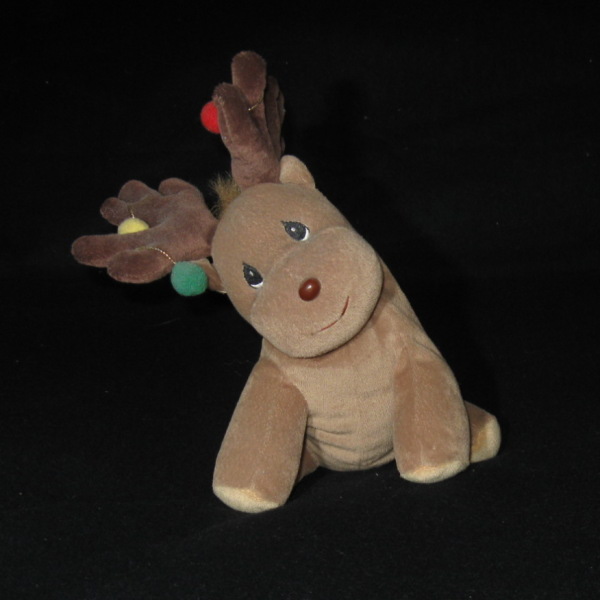I occasionally use a crossed-eye view for my 3D images instead of the parallel view. What is the difference?
When viewing stereo images with the parallel view, the left eye image of the pair is placed on the left side and the right eye image is placed on the right side. When viewing, the eyes are relaxed so that they do not converge on the images and therefore the left eye sees the left image and the right eye sees the right image.
When using the cross-eye technique the positions of the two images are swapped, the left eye image of the pair is placed on the right side and the right eye image is placed on the left side. When viewing, the eyes are crossed so that they swap the images and therefore the left eye sees the left image and the right eye sees the right image.
I have started using the crossed-eye technique because it allows me to view larger images with less strain on my eyes. Your mileage may vary, but here are the directions on how to do it anyway. If you want to learn how to view my 3D images in parallel view, go to view3d.shtml. I also use the anaglyph technique to display 3D images. To view the anaglyph images you need to have special glasses with colored lenses as shown on my other page, viewanaglyph3d.shtml.
For the crossed-eye and parallel-eye images you can tell which type of image you are looking at by noting that above each image I have placed a small icon. The icons provide a focal point for attempting to merge the images and also tell you which technique to use when viewing the image. If you see icons which consist of circles with two parallel lines in them:
then you should use the parallel-eye technique to view the image. If you see icons which consist of circles with two crossed lines in them:
then you should use this crossed-eye technique.
I have posted an image below that will allow you to practice. The marks above the images are there as an aid to learning the technique. The two circles with the X's in them will fuse into a single image with the X floating above the circle when you have properly crossed your eyes. If the circle appears to be floating above the X, then you have merged the images using the parallel technique and the illusion of three dimensions in the image below will not work.
|
|
|

|

|
The image on the right hand side of the photo is the image that your left eye would see in real life. The image on the left hand side of the photo is the image that would appear to your right eye were you there in person viewing this scene. The trick, then, is to fool your eyes into seeing the merged stereo image instead of the two side-by-side images that you see now.
The reason that you see two images side-by-side instead of one merged stereo image is that your eyes converge on the image when you focus on it. This is a natural and unconscious act to help you see. You need to train your eyes to focus on the image, but cross your eyes so that the left eye just sees just the image on the right and the right eye sees just the image on the left.
If you can already cross your eyes voluntarily, then you are half way there. Remember when you did that as a kid, and your mother would yell at you "What are you going to do if they get stuck like that?" and so you did it again just to annoy her? Well do that now while you are looking at the images above.
When you cross your eyes, the two images will jumble up into three or four images floating around. They will also most likely go out of focus. The trick is to gain enough control over the muscles in your eyes that you can slowly cross them until the multiple images converge into one in the center of view with a couple of ghost images floating to the sides of the center one.
If you cannot cross your eyes yet, try holding your finger near the screen beneath the images and slowly move your finger toward your face. Focus on your finger and your eyes will cross. Pay no attention to the images in the background. Do this several times and remember what it feels like to cross your eyes. Let your eyes relax a few times and then re-focus on your finger to train them what it feels like to cross.
After you can cross and uncross your eyes at will, put your finger half way between your face and the screen and focus on your finger. Your eyes will be crossed. Now freeze the muscles in your eyes and suddenly pull your finger out of sight.
You should briefly see the jumbled images in the background before you instinctively refocus on the screen. Try it again, and try to freeze your eyes so that you don't focus on the screen when you pull your finger away. Keep practicing until you can keep the jumbled images in view with your eyes crossed. To merge the two images into one, you just need to find the correct amount of eye-cross to do that. Try it with your finger closer to your face or farther away to get different amounts of eye-cross when you pull your finger out of the way.
After much practice you should be able to cross your eyes and uncross them to make the images scoot back and forth in front of you without using your finger to start from. Cool. This is like the point when you were a kid and stopped using your finger to read. Move the images across the screen by crossing and uncrossing your eyes more or less until you see the two images merge in the center. Pay no attention to the floating images on the sides.
If you are having trouble merging the two, try tilting your head to align the images vertically. You may be looking at the images with your head tilted and the images will not merge.
Keep practicing until you can merge the images at will. The next step is to focus on the images while keeping your eyes crossed. That is the difficult part to learn because it is natural for you to converge your eyes on the subject that you are focusing on. You must retrain yourself not to do that if this technique is going to work.
Another trick to try if you are having difficulty is to put your nose close to the screen and cross your eyes. The images will not merge, so just jumble them up. Now, freeze the position of your eyes and back away from the screen slowly. The relative positions of the images will change until they snap together into a single stereo image. You can do it the other way too, by sitting far back from the screen and crossing your eyes, then slowly moving closer to the screen until the images merge.
The farther you are away from the screen, the easier it will be to achieve focus with your eyes crossed. Try sitting way back from the screen and using the larger images below. Sit 6 or 8 feet back and try it.
Keep practicing.
Some people are never able to do this trick. The instinct to focus on an image is just too strong and it won't work. If that is the case for you, don't worry. Just enjoy the images as they are.... colorful but flat.
Brian
|
|
|

|

|